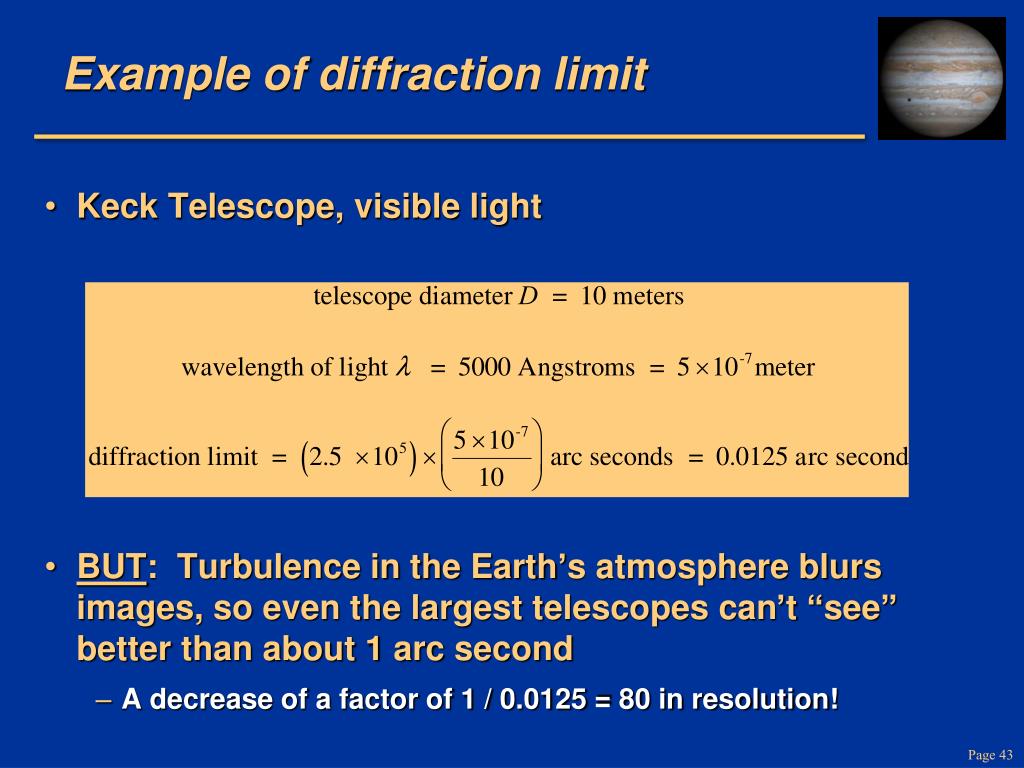

The result is effectively obtained by taking the Fourier transform of the aperture shape, which for a circular aperture results in a formula involving Bessel functions:

This formula needs to be modified for circular apertures. Where is the angular resolution, and D is the aperture width. The formula applies exactly to rectangular apertures, as will be seen in the radar section: What does this have to do with optical systems? The concept means that for a finite aperture, there is a fundamental limit to the angular resolution, which is defined by the ratio of the wavelength to the aperture width or diameter.įigure 3.20 Single slit diffraction pattern.įigure 3.21 Single slit diagram for the geometry of the diffraction pattern. The width of the central maximum is just twice this value, and we get a well-known result: that the angular width of the first bright region is Note that the secondary maxima outside this region can be important, particularly in the radar and communications worlds-these are the side lobes in the antenna pattern of a rectangular antenna. The function in brackets is the familiar sinc function, which has magnitude one at then drops to zero at This occurs when: Instead, there is a central maximum with a width determined by the wavelength of the light, the width of the slit, and the distance from the slit to the surface below, or range.Ī is the width the of the slit, x is the distance along the target surface away from the center line, R is the range, and is the wavelength.

For purely geometrical optics, there would be a white spot on the surface below, corresponding to the size of the slit. The somewhat out-of-scale figure shows light rays incident on a slit. The Rayleigh criterion is traditionally presented in the one-dimensional (1D) case, where an infinite single slit is considered. Diffraction applies equally to sound and ocean waves, which have scales of distance we’re more familiar with.ĭiffraction leads to a fundamental, defining formula for the limitation in angular (spatial) resolution for any remote sensing system: the Rayleigh criterion. One manifestation of this wave character is diffraction-the fact that light can diffuse around sharp boundaries. In addition to geometrical issues in optics, we must consider the impact of physical principles that depend upon the wave character of light.


 0 kommentar(er)
0 kommentar(er)
